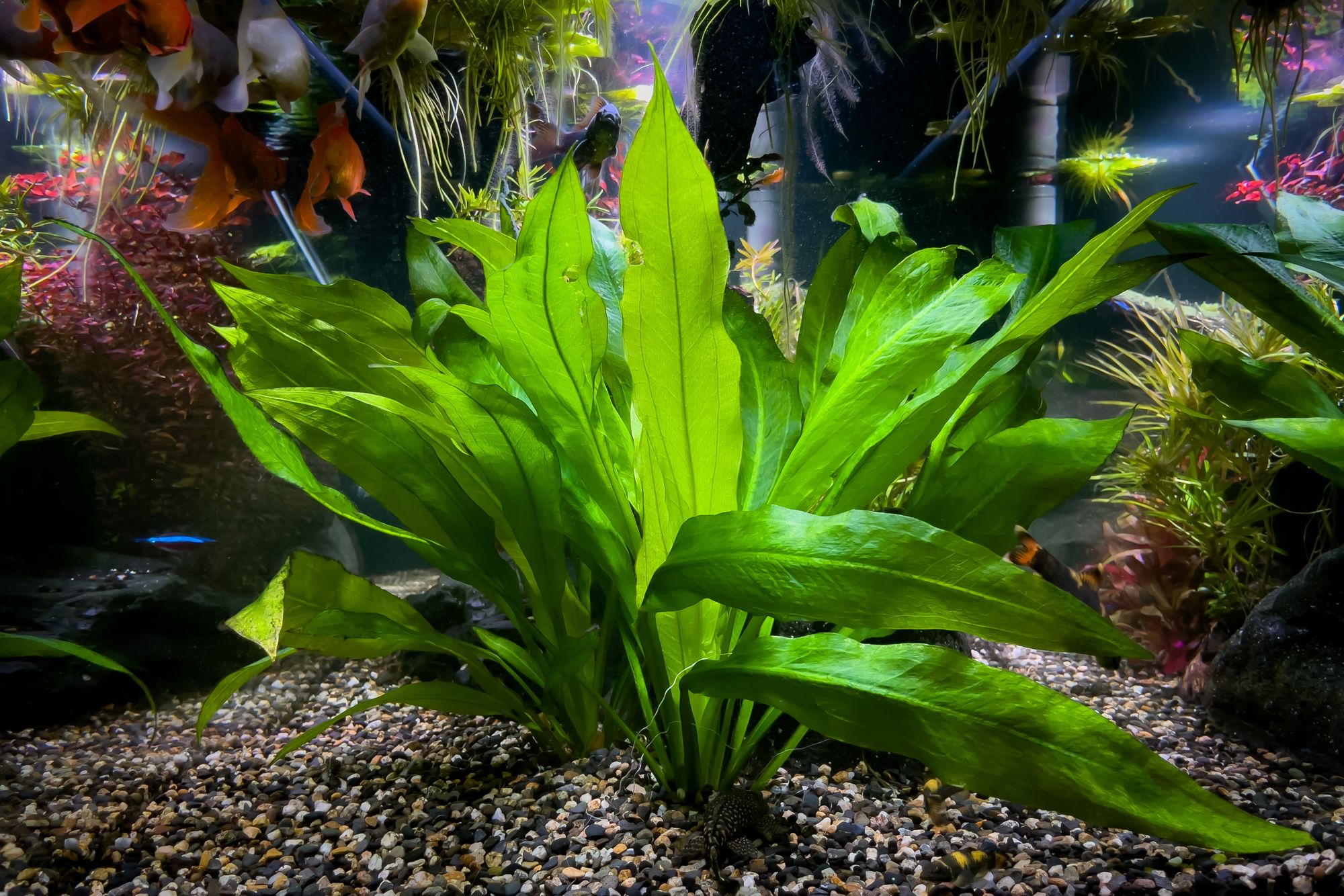General Information
Large Amazon Sword (Echinodorus grisebachii 'Bleherae') is a submersed and emersed rosulate plant that originates in South America and grows on the banks of rivers.
If the Amazon Sword plant is shooting out stems or is flowering, it is a sign of health and happiness. Large Amazon Sword is suitable for medium tanks and can be placed in the background. Its leaves are very narrow and elliptic with a medium to dark green color. The leaf has a long petiolate which connects it to the stem. The stems are arranged in a circular order close to the ground which is also called rosette or rosulate.
It can grow from 20 to 60 cm tall. Since it has a fast growth rate, you need to make sure there is enough nutrients present in the water and the soil - otherwise the plant will decay.
The following sections give an in-depth overview on how to plant, grow and propagate the plant in your tank successfully.
How to plant Large Amazon Sword
Large Amazon Sword is a rosulate plant, which means it needs to be planted in soil. It is best placed deep into soil with the help of tweezers while making sure that at least 2-3 cm of the root are covered in soil.
Where to place Large Amazon Sword
Due to its large size of maximum 60 cm, Large Amazon Sword is best suited as a background plant and can be used in medium tanks starting at 15 gallons of water.
The step-by-step process to plant Large Amazon Sword
- Before beginning, make sure the aquarium is not filled with water yet, but the soil is wet.
- Most likely the Large Amazon Sword will arrive in a black pot with rock wool, which is a cotton-like material cushioning the roots. Carefully remove the black pot and as much of the rock wool as possible. You can either do this under running water or with your tweezer / fingers.
- Afterwards, trim the roots so that they’re no longer than 1-2 cm.
- (Optional) Divide the plant into smaller parts by cutting it with a sharp knife or scissors.
- Use tweezers to pick up each small batch by the rosulate at an angle of approximately 45°. Be careful not to squeeze the plant too tight, otherwise you might damage the rosulate.
- Now push the plant into the soil using the tweezers in a 45° angle until the rosulate of the plant is dug into the soil 2-3cm deep. When in doubt, it's better to plant the plant a little too deeply than too shallowly. Otherwise, it might float to the top before roots can attach properly.
- After pushing the plant into the soil, don't just pull the tweezers out. Instead, pull the tweezers out in a slow and wiggling motion in order not to pull the plant with you and disturb the soil to cover the plant.
How to grow Large Amazon Sword fast
The overall growth-rate of Large Amazon Sword is fast. There are, however, some things you can do to speed up the process further:
- Adding CO² to your tank: Although Amazon Sword Plants don't require CO², their growth rate will increase significantly if you opt for low or moderate CO² injection.
- Add nutrients to your tank: The regular addition of fertilizer with iron and potassium is highly encouraged to ensure healthy growth and intensely green leaf color.
- Choose the right spot: Amazon Sword Plant enjoys medium full-spectrum lighting for at least 6 hours if using CO² and 8-10 hours if not CO² is added to the tank.
How to propagate Large Amazon Sword
Large Amazon Sword is a rosulate plant. This means that new leaves will grow from inside the rosulate circle, pushing the old leaves to the outside. The plant will grow bigger this way, but won't build new rosulates by itself. It is also not possible to simply remove a stem from the plant and grow a new rosulate out of it. Instead, you need to dig your plant out of the soil and divide the existing rosulate into two or more pieces. Make sure not to make the pieces too small, as the Large Amazon Sword may not recover from this. The split pieces can then be burried in soil just as described in the "How to plant"-section.
Common problems with Large Amazon Sword
- Yellow Leaves: In case the leaves on Large Amazon Sword turn yellow, this is a sign for lack of nutrients in the water. We suggest to check the water parameters in order to determine which fertilizer to add.
- Melting Leaves: In case the leaves on Large Amazon Sword seem to rot or melt, this might also be a sign for lack of nutrients in the water or soil. Other reasons could be too much or too little light. In these cases, it's best to measure your tank parameters and compare them to the data in the "plant characteristic" table in the top right of this page.
- Overgrowth: Amazon Sword Plant can grow very tall, so it will need a lot of trimming in smaller tanks or else it can quickly take over
